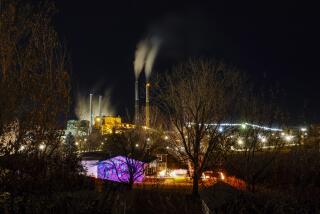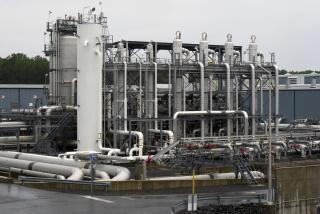Editorial: In the age of global warming, do we really need so many new natural gas pipelines?
The proposed Mountain Valley Pipeline would carve a 150-foot-wide swath through the Appalachian Mountains, including a several-mile stretch tracking and then crossing the Appalachian Trail — the revered 2,168-mile hiking route that extends from Georgia to Maine.
The threat to the bucolic nature of that trail (even though it already crosses roadways about every four miles) has drawn a national spotlight to the project, one of a half-dozen pending or approved natural gas pipelines running from Appalachian shale fields to outlets along the East Coast and in the Midwest. The Federal Energy Regulatory Commission, which recently issued a final environmental impact statement for the Mountain Valley project, needs to ensure that the pipeline, if it goes forward, will be minimally invasive to such beautiful terrain, and have as little impact on the Appalachian Trail as possible.
But the bigger question is when and whether such pipelines are necessary, and whether FERC, which must approve all interstate gas pipelines, is up to the task of deciding.
It seems foolish to weigh the merits of pipeline proposals individually, and without accounting for the entire environmental impact of moving gas to market.
Critics argue that the commission is too cozy with the pipeline industry and too quick with the approval stamp (which is especially galling for landowners who then lose property to pipelines through eminent domain). They say it does not adequately weigh public input and fails to take a broad view of the state of the natural gas supply, as well as its impact on the environment.
In a controversial statement filed as he left FERC earlier this year, former commissioner Norman C. Bay (an Obama appointee) argued that while FERC has been approving pipelines to ship gas from the Marcellus and Utica shale fields in Pennsylvania and West Virginia, it “has never conducted a comprehensive study of the environmental consequences of increased production from that region” in determining the environmental impacts of the pipelines themselves. Such a narrow focus fails, for instance, to account for the amount of methane incidentally released into the atmosphere, which has an exponentially higher short-term impact on global warming than carbon dioxide.
What’s more, just because a pipeline’s builders can show they have buyers for the gas does not mean the pipeline is necessary; nor does the short-term demand justify infrastructure investment with half-century shelf life.
FERC officials say they listen to all sides, and note that the commission lacks the authority to regulate how gas is produced or captured — just how it reaches its market.
To be sure, natural gas is a better alternative to higher-polluting coal in generating electricity or heating homes (which it long ago supplanted), but gas is still a fossil fuel and the world should be focused on weaning itself as much and as fast as it can to limit the worst effects of global warming.
There are several reform proposals floating around to make FERC more effective. One, introduced by two Virginia Democrats in the Senate and by a West Virginia Republican in the House, would tackle several issues, including requiring more public hearings in more locations along a planned pipeline route. Another proposal is to change the framework for how FERC measures need, requiring it to consider the aggregate impact of pipelines, rather than just taking each application as it comes.
FERC needs a review of what its mission is and whether that mission is being achieved. It seems foolish to weigh the merits of pipeline proposals individually, and without accounting for the entire environmental impact of moving gas to market. In an era of global warming, it’s also foolish to expand infrastructure that will serve to hasten climate change, rather than combat it.
Given the “drill, sell, burn” mindset in the White House and Congress, meaningful reform will be hard to achieve — the prevailing philosophy favors less government involvement and the undoing of even efficient regulatory regimens. Still, the effort needs to be made for the sake of the environment’s sake, for consumers who could well wind up shouldering the costs of overdeveloped and unnecessary infrastructure, and for investors who would be on the hook if that expensive infrastructure become obsolete as the world moves away from burning fossil fuels.
Follow the Opinion section on Twitter @latimesopinion or Facebook
More to Read
A cure for the common opinion
Get thought-provoking perspectives with our weekly newsletter.
You may occasionally receive promotional content from the Los Angeles Times.










